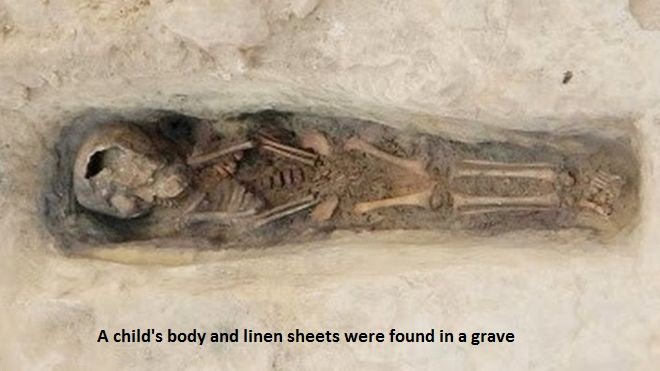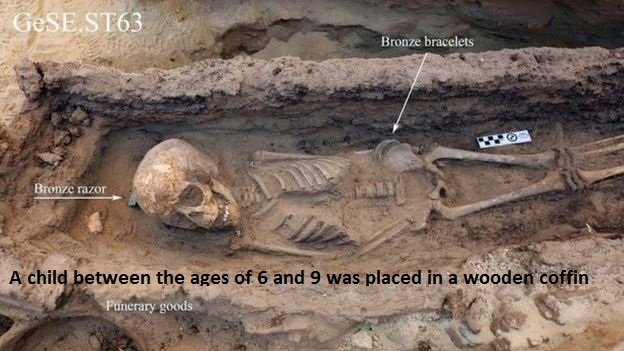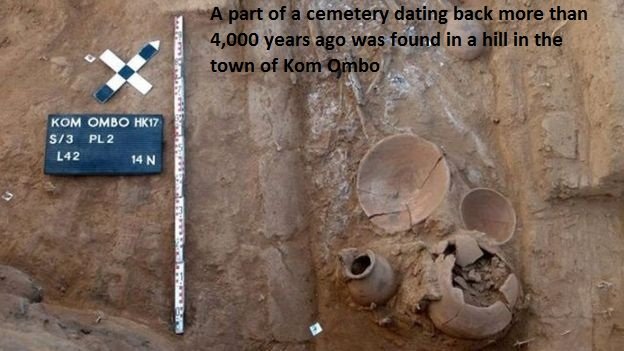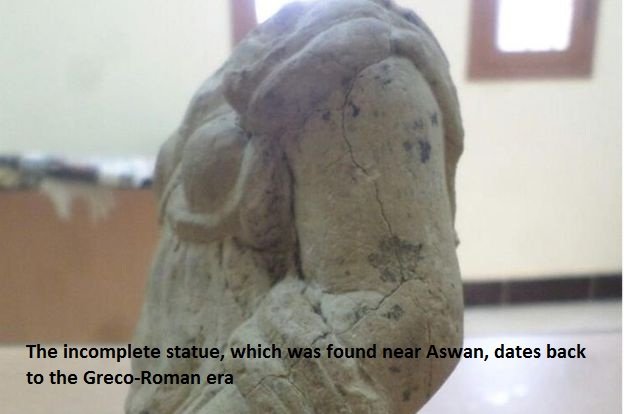
Four healthy graves have been discovered for children buried more than 3,000 years ago in a series of archaeological discoveries near the southern city of Aswan, officials said.
The head of the Egyptian Antiquities Sector, Dr. Ayman Ashmawi, said that the linen rolls used to mummify the body are still in a tomb discovered by a Swedish-Egyptian excavation team.
The tomb dates back to the 18th Pharaonic family (1549-1550-1292 BC).
An Austrian-Egyptian excavation team also discovered part of a cemetery and a Swiss excavation team found a woman's statue.

Archaeologists discovered these graves at the site of Jabal al-Silsilah. A tomb was carved into the rock to bury a child between 2 and 3 years old.
Linen moss rolls were also found on organic material from the remains of an arched wooden coffin.

Other finds in the tomb include amulets and a set of pottery vessels that were found in the second tomb, which belonged to a child between 6 and 9 years old, placed inside a wooden coffin, and in the third grave, which belonged to a child aged 5 to 8 years.
The fourth tomb was also for a child aged five to eight years.
The discovery will shed more light on burial traditions as well as on social, economic and religious life during the 18th Dynasty, also known as the Age of Baptism, according to Dr. Maria Nelson, head of the Swedish exploration mission.
Nelson told the BBC that so far 69 graves had been found at the Mount Silesia site, more than half of which had already been dug, and most of the graves that had been dug had been looted in ancient times.

Meanwhile, an Egyptian-Austrian excavation team working in a hill in the town of Kom Ombo in the southern province of Aswan revealed part of a cemetery dating back to the first transitional period dating back more than 4,000 years ago.
The head of the mission, Dr Irene Foster, said that the cemetery contained many mud-brick tombs containing pottery vessels and funeral furniture.
It was the remains of a town dating back to the Old Kingdom (2613-2181 BC) and was found under the tomb, whose ceilings are the seal of King Sahur of the Fifth Dynasty (2494-2345 BC).

The third discovery in the region was an incomplete statue dating back to the Greco-Roman era and was found by the Egyptian-Swiss expedition near Aswan.
The statue, carved from yellow limestone, looks like a headless woman and has cut her legs and right hand too.
Abdel Moneim Said, general manager of the Aswan and Nubia ruins, said the dress worn by the woman resembled that of the Greek goddess Artemis, the goddess of hunting, procreation and fertility.

If you liked this blog post - please Resteem it and share good content with others!
Follow me I will follow you in the same way and you will find me when you think and do not hesitate

hi